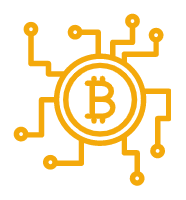Ransomware is often cited as a reason that “Bitcoin is used by cybercriminals”. It is true that Bitcoin is the preferred method of payment for ransomware criminals. However, it is also important to understand that
- Ransomware represents a small portion, approx 0.33%, of overall cybercrime
- The US Treasury’s 2024 National Money Laundering Risk Assessment Report found that “the use of virtual assets for money laundering remains far below that of fiat currency.”

Key stats
Estimated total losses due to cybercrime by 2025: 10.5 Trillion (source: Cybercrime Magazine)
Estimated total losses due to cybercrime today: $6 Trillion (Source: Cybercrime Magazine, 2021 figure)
Percentage of total cybercrime that is ransomware: 0.33 %
Losses due to ransomware: $20 Billion. Source: Cybercrime Magazine. (0.33% of all annual cybercrime)
Note: Chainalysis puts the direct cost at just over 1Billion. However for an apples-for-apples comparison for other types of cybercrime we use the total estimated damages figure (including downtime, loss of business continuity). Estimates range, but $20Billion is a commonly quoted number

So in summary, there is a small subcategory of cybercrime where criminals prefer Bitcoin. For the other 99.67% of cybercrime: criminals prefer fiat.
Breakdown of all categories of Cybercrime
1. Data Breaches
- Description: Unauthorized access to confidential or sensitive information, often involving theft of personal, financial, or corporate data.
- Estimated Loss: $3.5 trillion
2. Financial Cybercrime
- Description: Criminal activities involving the theft of financial assets through fraudulent transactions, scams, and deceptive practices.
- Estimated Loss: $2 trillion
3. Hacking
- Description: Unauthorized access to systems and networks, often leading to data theft, system disruptions and other forms of cyber attack.
4. Malware
- Description: Malicious software designed to damage or disrupt systems, steal data, or perform other harmful activities.
5. Online Harassment and Cyberstalking
- Description: Using digital platforms to harass or stalk individuals, often resulting in personal and emotional harm.
- Estimated Loss: €49.0 billion to €89.3 billion (approximately $53 billion to $98 billion)
- Source: EU Parliament Study 2021
6. Identity Theft
- Description: Theft and misuse of personal information to commit fraud. This includes account takeovers and fraudulent transactions.
- Estimated Loss: $56 billion (U.S. alone; global figures are higher)
- Source: Javelin Strategy & Research 2020
7. Cyber Espionage
- Description: Theft of sensitive or classified information such as IP theft, trade secret theft
- Estimated Loss: not yet quantified, although initial estimates suggest in the $10-30billion range.
8. Ransomware
- Description: Cybercriminals encrypt data or lock users out of their systems, demanding ransom payments to restore access.
- Estimated Loss: $20 billion
- Source: Cybercrime Magazine
9. Cyberterrorism
- Description: Cyber attacks aimed at causing physical damage or major disruption to critical infrastructure and public services.
10. Dark Web and Illegal Marketplaces
- Description: Buying and selling illegal goods and services such as drugs, weapons, and stolen data.
| ReplyForwardAdd reaction |
